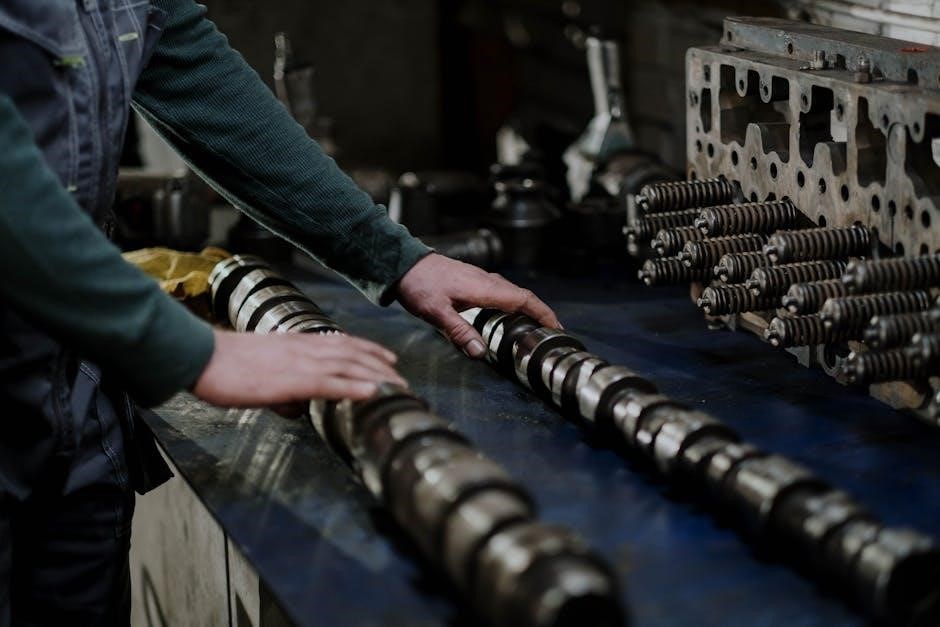Manual Garage Door Parts Diagram: A Comprehensive Guide
Understanding the anatomy of your manual garage door is crucial for maintenance and repair. A detailed diagram helps identify essential components like panels, hinges, tracks, rollers, springs, cables, brackets, and weatherstripping. Knowing these parts ensures efficient troubleshooting and proper functioning of your garage door system.
Manual garage doors represent a traditional approach to accessing your garage, relying on human power rather than an automated system. Unlike their electric counterparts, manual doors lack an opener and require you to physically lift and lower them. This design emphasizes simplicity and can be advantageous in situations where electricity is unreliable or unavailable.
Understanding how manual garage doors operate begins with recognizing their core components. These doors feature essential parts, including panels that form the door’s surface, hinges connecting the sections, and tracks guiding the door’s movement. Rollers ensure smooth operation within the tracks, while springs counterbalance the door’s weight, making it easier to lift.
Cables play a crucial role in the lifting mechanism, and brackets secure the system to the garage structure. Weatherstripping provides a seal against the elements, and locking mechanisms enhance security. Recognizing these components and their functions is the first step towards effectively maintaining and repairing a manual garage door, ensuring its longevity and reliability.
Garage Door Panels: Materials and Design
Garage door panels are the fundamental building blocks of any garage door, defining its aesthetic appeal and structural integrity. Typically rectangular, these sections are crafted from various materials, each offering unique advantages in terms of durability, insulation, and appearance. Common materials include steel, known for its strength and affordability, wood, prized for its natural beauty, aluminum, valued for its lightweight and corrosion resistance, and vinyl or fiberglass, appreciated for their low maintenance requirements.
The design of garage door panels can vary significantly, ranging from simple, flat surfaces to more elaborate styles with raised panels, embossed patterns, or decorative hardware. Windows can also be incorporated into the panels to allow natural light into the garage. The choice of finish is equally diverse, with options including prime, paint, stain, and faux stain, allowing homeowners to customize the door to match their home’s exterior.
Whether opting for a classic wood design or a modern steel construction, the panels dictate the overall look and feel of the garage door.
Garage Door Hinges: Connecting the Sections
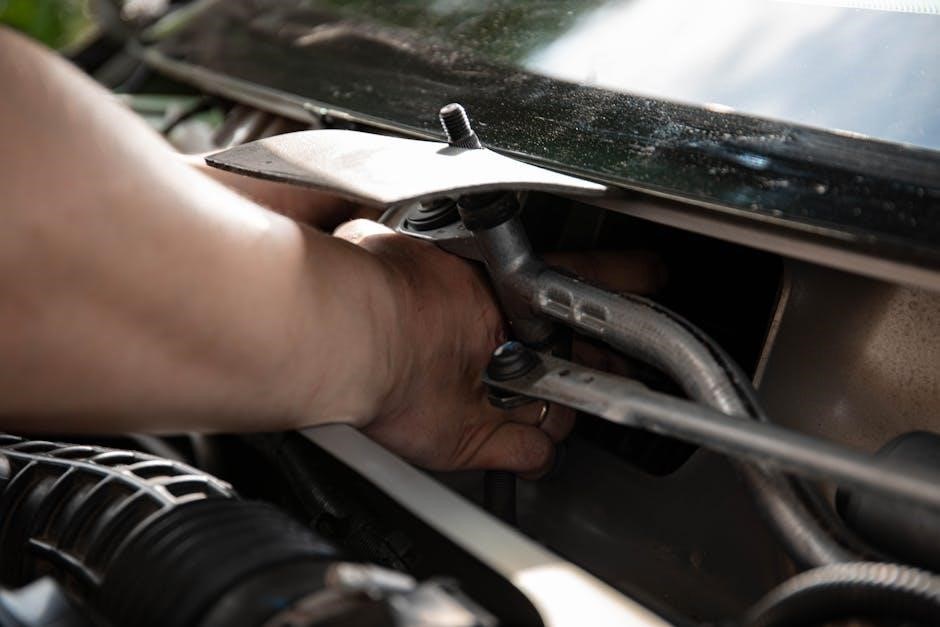
Garage door hinges are essential components that connect the individual panels of the garage door, enabling it to bend and move smoothly along the tracks. These hinges are typically made of steel and are designed to withstand the constant stress and movement associated with opening and closing the door. The placement and type of hinges are crucial for proper door operation.
Hinges are numbered, typically from 1 to 5 or 6, with the number indicating their position on the door. The hinges located in the center of the door are usually heavier-duty, as they bear more weight and stress. Proper lubrication of the hinges is essential to ensure smooth and quiet operation.
Regular inspection of the hinges is recommended to identify any signs of wear, damage, or corrosion. Replacing worn or damaged hinges promptly can prevent further damage to the garage door and ensure its safe and reliable operation. Choosing the correct replacement hinges, matching the original specifications, is crucial for maintaining the door’s balance and functionality. Hinges are what hold your garage door together.
Garage Door Tracks: Vertical and Horizontal
Garage door tracks are essential components that guide the garage door’s movement as it opens and closes. These tracks are typically made of steel and are mounted vertically along the sides of the door opening and horizontally along the ceiling of the garage. The vertical tracks guide the door up and down, while the horizontal tracks support the door’s weight when it is in the open position.
The tracks must be properly aligned and securely fastened to the garage walls and ceiling to ensure smooth and safe operation. Misaligned or damaged tracks can cause the door to bind, jam, or even come off the tracks, posing a safety hazard. Regular inspection of the tracks is recommended to identify any signs of damage, such as bends, dents, or loose fasteners. Proper lubrication of the tracks can also help to reduce friction and noise.
Tracks are available in different widths to suit the application. The two most common types of garage door tracks are the vertical track and the horizontal track.
Garage Door Rollers: Guiding the Movement
Garage door rollers play a vital role in the smooth and efficient operation of a garage door. These small, but crucial components are responsible for guiding the door along the tracks as it opens and closes. Typically made of steel, nylon, or a combination of both, rollers are designed to withstand the constant friction and weight of the door.
Each garage door panel has rollers attached to its edges, which fit snugly into the tracks. As the door moves, the rollers glide along the tracks, allowing the door to move up and down with ease. The quality and condition of the rollers significantly impact the door’s overall performance. Worn or damaged rollers can cause the door to bind, squeak, or even come off the tracks, leading to potential safety hazards.
Regular maintenance, including lubrication, is essential to keep the rollers in good working order. Applying a silicone-based lubricant to the rollers and tracks reduces friction and extends their lifespan. Replacing worn or damaged rollers promptly is crucial to ensure smooth and safe garage door operation.
Garage Door Springs: Torsion and Extension
Garage door springs are essential components that counterbalance the weight of the door, allowing it to be opened and closed with relative ease. There are primarily two types of garage door springs: torsion springs and extension springs. Torsion springs are mounted horizontally above the garage door opening, while extension springs are located along the sides of the tracks;
Torsion springs work by winding and unwinding, storing mechanical energy as the door is closed and releasing it to lift the door. Extension springs, on the other hand, stretch and contract to provide the necessary force. Both types of springs are designed to withstand significant tension and are crucial for the safe and efficient operation of a garage door.
Due to the high tension involved, garage door springs can be dangerous to handle. It is highly recommended that only qualified professionals with the proper tools and experience attempt to repair or replace them. Regular inspection of the springs is essential to identify any signs of wear or damage, such as rust, cracks, or excessive stretching. Addressing these issues promptly can prevent potential accidents and ensure the continued smooth operation of the garage door.
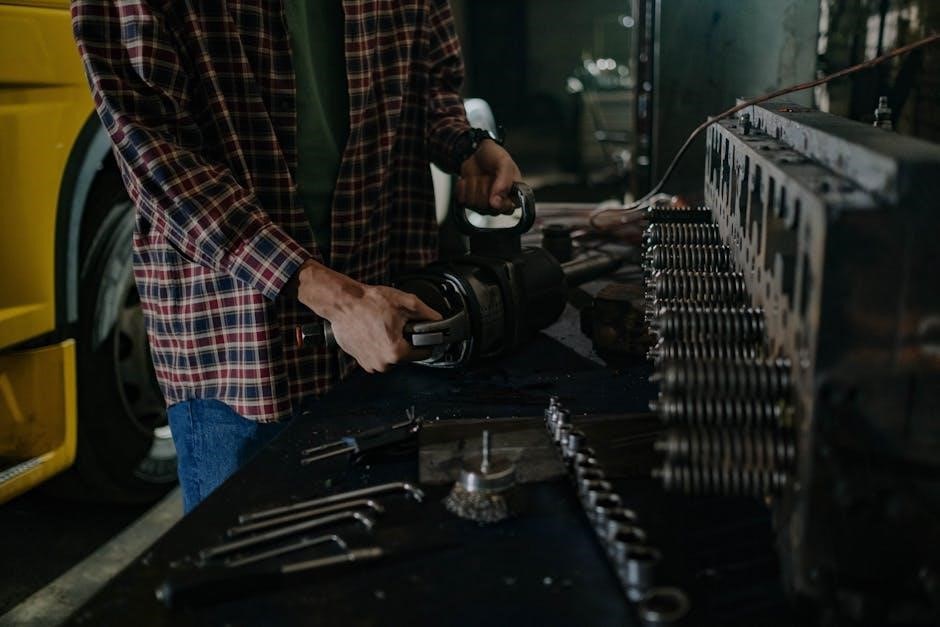
Garage Door Cables: Lifting Mechanism
Garage door cables play a vital role in the lifting mechanism of a manual garage door system. These cables are responsible for transferring the force from the springs to the door, enabling it to move smoothly and efficiently along the tracks. Typically made of strong, braided steel, garage door cables are designed to withstand the significant tension and weight associated with raising and lowering the door.
The cables are usually connected to the bottom brackets of the garage door and run up to the spring system, either torsion or extension. In a torsion spring system, the cables wind around drums located at each end of the torsion spring shaft. As the spring unwinds, it rotates the drums, which in turn pull on the cables to lift the door. In an extension spring system, the cables are connected to pulleys that are attached to the extension springs.
Properly functioning cables are essential for the safe operation of the garage door. Damaged or frayed cables can lead to uneven lifting, door misalignment, or even complete failure of the lifting mechanism. Regular inspection of the cables is crucial to identify any signs of wear or damage.
Garage Door Brackets: Securing the System
Garage door brackets are essential components responsible for securing various parts of the garage door system to the garage structure. These brackets provide crucial support and stability, ensuring the safe and reliable operation of the door. They are typically made of heavy-duty steel to withstand the significant forces exerted during the opening and closing process.
Several types of brackets are used in a garage door system, each serving a specific purpose. Track brackets, for instance, attach the vertical and horizontal tracks to the garage walls, providing a stable pathway for the rollers. Spring brackets secure the torsion or extension springs to the header or track, enabling them to effectively counterbalance the weight of the door.
Hinge brackets connect the door panels together, allowing them to pivot smoothly as the door moves along the tracks. Bottom brackets, located at the bottom corners of the door, serve as anchor points for the lifting cables. Proper installation and maintenance of garage door brackets are critical for maintaining the structural integrity of the entire system.
Garage Door Weatherstripping: Sealing the Door
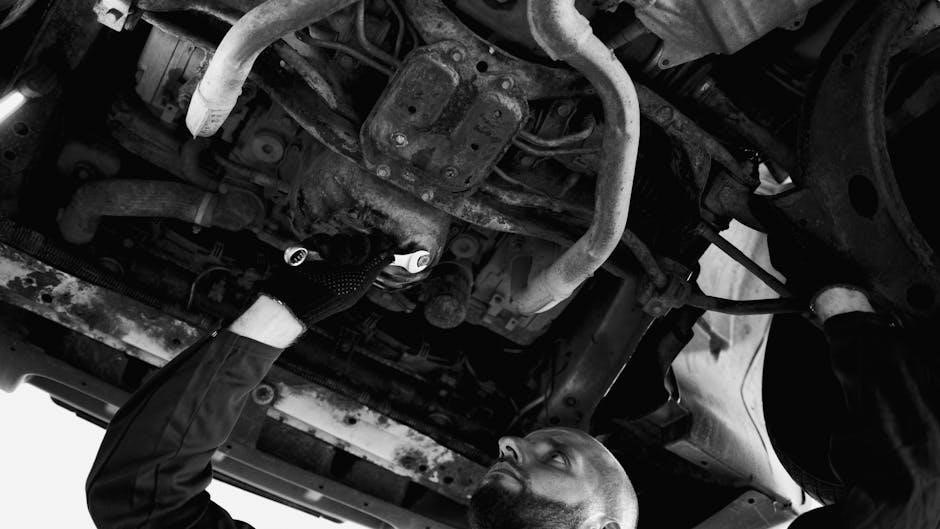
Garage door weatherstripping is a crucial element in maintaining the energy efficiency and protection of your garage. It acts as a seal, preventing air, water, and pests from entering the space. Proper weatherstripping helps regulate the temperature inside the garage, reducing energy costs and preventing damage from moisture.
Several types of weatherstripping are available, each designed for specific areas of the garage door. Bottom weatherstripping, typically made of rubber or vinyl, seals the gap between the door and the floor, preventing drafts and water intrusion. Side weatherstripping is installed along the sides of the door opening, creating a barrier against air leaks and insects.
Top weatherstripping seals the gap between the door and the header, further enhancing insulation and preventing drafts. When selecting weatherstripping, consider the material, durability, and ease of installation. Regular inspection and replacement of worn or damaged weatherstripping are essential for maintaining an effective seal and protecting your garage from the elements.
Locking Mechanisms in Manual Garage Doors
Locking mechanisms are vital for securing manual garage doors, providing a barrier against unauthorized entry and protecting valuables stored inside. These mechanisms typically involve a combination of latches, handles, and locking bars designed to engage securely with the door tracks or frame.
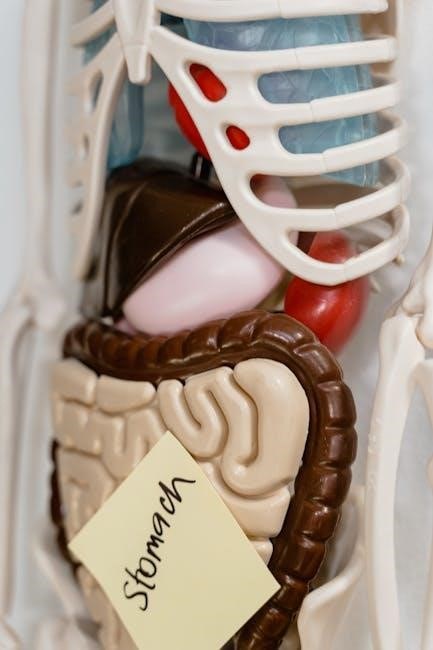
Common types of locking mechanisms include slide bolt locks, which manually slide into place to secure the door, and T-handle locks, which utilize a key-operated cylinder to engage locking bars. Some manual garage doors also incorporate internal locking systems that automatically engage when the door is closed, offering an added layer of security.
Proper installation and maintenance of locking mechanisms are essential for ensuring their effectiveness. Regularly inspect the locks for signs of wear or damage, and lubricate moving parts to prevent corrosion and ensure smooth operation. Consider upgrading to higher-security locking systems for enhanced protection, especially if the garage contains valuable items. A well-maintained locking mechanism provides peace of mind, knowing your garage is secure.
Garage Door Safety Considerations
Garage door safety is paramount, especially with manual garage doors, requiring careful attention to prevent accidents and injuries. Regular inspection of all components, including springs, cables, rollers, and hinges, is crucial to identify potential hazards. Ensure that all parts are in good working condition and properly lubricated to avoid malfunctions.
Never attempt to repair or adjust garage door springs without professional assistance, as they are under high tension and can cause serious injury if mishandled. Keep fingers and hands clear of moving parts when operating the door manually. Educate all household members, especially children, about garage door safety and the potential risks associated with improper use.
Install safety features such as pinch-resistant panels and safety cables to minimize the risk of injury in case of component failure. Always ensure the garage door is fully open or closed before walking or driving underneath it. By prioritizing safety and following these precautions, you can minimize the risk of accidents and ensure the safe operation of your manual garage door.
Maintenance and Repair of Manual Garage Doors
Regular maintenance is vital for ensuring the longevity and smooth operation of manual garage doors. Inspect the door regularly for signs of wear, damage, or misalignment. Lubricate all moving parts, including hinges, rollers, and tracks, with a silicone-based lubricant to reduce friction and prevent corrosion. Check the condition of the weatherstripping and replace it if it is cracked or damaged to maintain a proper seal and prevent drafts.
If you notice any issues, such as difficulty opening or closing the door, unusual noises, or sagging panels, address them promptly. Minor repairs, like tightening loose bolts or replacing worn rollers, can often be done yourself. However, more complex repairs, such as spring replacement or cable repair, should be left to qualified professionals due to the high risk of injury.
Refer to the garage door parts diagram to correctly identify the components needing attention. Keeping your manual garage door properly maintained not only extends its lifespan but also ensures safe and reliable operation. Consistent care can prevent costly repairs and keep your garage door functioning efficiently for years to come.

